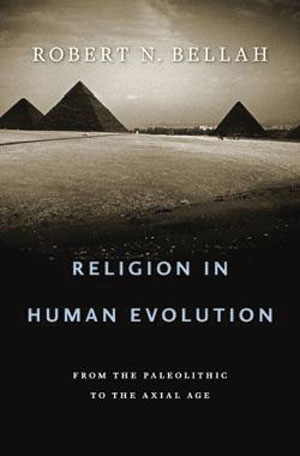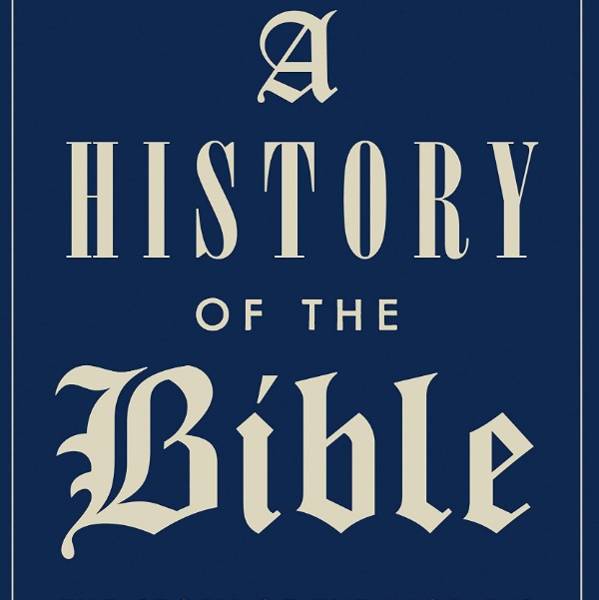 Religion in Human Evolution by Robert Bellah (Harvard University Press)
Religion in Human Evolution by Robert Bellah (Harvard University Press)
There is a contemporary myth about religion that goes like this: our earliest ancestors were scared. They were trying to survive in a hostile and brutal world, with minimal technology to assist them. At night they were never sure if the sun would rise the next day and in winter they could never be certain that spring would return. Women often died in childbirth, children often died before reaching adulthood, lives were brutish and short, punctuated by pain and disease.
In search of some way of explaining an unpredictable existence, our ancestors looked to the heavens, to the forces that caused the world to be as it was. They invented God/Gods at whose whim mankind existed. They sought to assuage their anxieties by offering sacrifices and performing rituals that would find favour in God’s eyes.
Religion was an understandable human invention, one that allowed humans to find some comfort during their brief existence. But as humans came to know more about the way the world really worked, religion became not just anachronistic, but a dangerous flight from reality that impedes human progress.
This myth isn’t exactly wrong. Religion did and does comfort. Religion did and does provide explanations for the inexplicable. Religion can be an obstacle to contemporary scientific thought. But to really understand how religion emerged and what part it has played in human evolution, you need to go deeper, to interrogate the evidence, to look at religion in context.
Robert Bellah’s monumental Religion in Human Evolution attempts to do just this. Bellah is one of America’s most distinguished sociologists of religion and although he has published books on Japanese and Asian religion, he is perhaps best known for his work on what he termed American “civil religion”. For Bellah, American beliefs, rituals and symbols have all the force of a religion, a religion that both transcends and reinforces the traditional religions that Americans may or may not subscribe to. The 1985 book he co-authored, Habits of the Heart, investigated the complex relationship between religion, the individual and community in American society. Famously, the book identified one interviewee called Sheila’s faith as“Sheilaism”, which has become the paradigmatic example of contemporary radical individualism in which individuals “believe without belonging”, a phenomenon about which Bellah is highly ambivalent.
Bellah is sometimes associated with communitarianism, in as much as he appreciates the necessity for community and communal institutions in individual fulfilment, and views religion sympathetically as a possible force for good. Religion in Human Evolution is not a defence of religion, although it does criticise simplistic religion–science dichotomies. In fact, the book does not deal with religion in the contemporary world at all but concentrates on the evolution of religion up until the end of what he calls, borrowing a term from Karl Jaspers, the “axial age” (roughly the first millennium BCE). “Stopping” just at the point where religion becomes codified and a significant source of discord may seem perverse, but there are real implications for contemporary debates on religion to be found in this mammoth, sometimes enthralling and sometimes baffling book.
Perhaps the most distinctive aspect of the book is Bellah’s historical starting point – the Big Bang. His history of religion starts with history itself and looks closely at the evolution of humanity, which is both unusual and quite an achievement for a sociologist. Bellah is interested in the “capacities”, as he calls them, of human beings, particularly the instinct for “play”, which constitutes an important element in religious practice. He contextualises the genesis and evolution of religion as part of a history of human civilisation as it developed over millennia. Throughout, he pays just as much attention to changes in social organisation, kingship, kinship or agriculture as he does to anything that can conventionally be termed “religion”. Even where he focuses on ideas, as in his long discussion of Greek philosophy, there is no clear-cut distinction made between “religious” and “secular” ideas.
If the book’s argument can be easily summarised at all, it is that the evolution of religion is an integral part of the evolution of civilisation itself. Bellah draws on Merlin Donald’s notion that human culture has evolved from episodic, to mimetic, to mythic, to theoretic culture. The transition from mythic to theoretic is a particular concern of the book and it is closely connected to a transition from archaic to axial civilisation. In an archaic culture such as ancient Egypt, “religion” was bound up in a society in which the division between myth and reality was blurred and within which the Pharoah was both human and divine (although not God). In an axial civilisation such as ancient Israel, the divine–human distinction was starker and this opened up a space in which theoretic culture – that is, “thinking about thinking” – became possible.
So for Bellah the four axial civilisations he discusses – ancient Israel, China, Greece and India – all made world-transforming “breakthroughs” in human thought. Figures such as Confucius, Buddha and Plato and texts such as the Bible and the Upanishads helped to shift the very parameters on which human action was possible. It is no coincidence that post-axial age technology, social organisation and thinking itself developed an unprecedented sophistication whose consequences we are still living through.
The challenge in Religion in Human Evolution is to tease out its implications for religion in the modern age. Bellah himself is unlikely to do this – he’s 84 and this book took him 13 years to write and is based on a lifetime of reading. The book doesn’t even discuss Christianity or Islam and even the axial-age Judaism that he does discuss was radically changed following the destruction of the second temple in 70 CE.
One important lesson of the book is that religion is not a phenomenon that can easily be abstracted out of the rest of human activity. In pre-modern societies there was no such thing as religion, since what we now consider discrete parts of social life were part of a (admittedly not seamless) whole. To study religion is to study humanity itself. To seek to marginalise religion in the contemporary world, or to eliminate it altogether, underestimates the complex and deep-rooted links that tie what we now call religion into the very fabric of all our civilisations. As Bellah elegantly puts it: “Nothing is ever lost.” We cannot purge religion in its entirety from contemporary civilisation. Nor can we see religion as simply a brake on human progress, as the irrational, superstitious side of humanity.
But at the same time, the very fact that it is even possible for some to imagine a world without religion demonstrates the radical change that modernity brought. Even if our world is shot through with the legacy of our religious past and its lingering present, the sheer complexity of modernity, together with the individualism and fragmentation it engenders, makes the radical reformulation of the world “thinkable”. This is both terrifying (think of Cambodia’s “year zero”) and also tremendously hopeful. In any case, if we want to alter our present and future, we need to face and embrace our past in all its messiness and inconvenience, and here Bellah’s book makes a valuable contribution.

